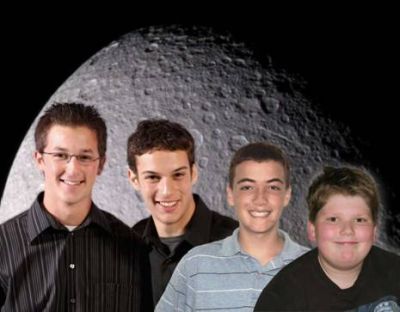18 June 2008

Credit: NASA/JPL
NASA’s Jet Propulsion Laboratory (JPL) has announced that four American students have won NASA’s Cassini Scientist for a Day contest, with most choosing Rhea, Saturn's second-largest moon, as the best object for scientists to study using NASA's Cassini spacecraft.
The contest was to choose one of three target areas for Cassini’s camera and write an essay explaining why their chosen snapshot would yield the most scientific results. The target areas were Saturn's geologically-active moon Enceladus, Rhea, or a section of Saturn's rings that includes the tiny moon Pan.
The winners were invited to discuss their essays with Cassini scientists via teleconference. The essays were judged by a panel of Cassini scientists, mission planners, and the education and outreach team at NASA's Jet Propulsion Laboratory.
This year's winners are located in Pennsylvania, Massachusetts and Michigan. Their essays were chosen from 197 essays written by fifth-to-twelfth-grade students across the United States.
Michael Keefe, an eighth-grader from Scituate, Massachusetts, and the winner in the 7th-to-8th-grade category, chose Rhea.
"A photograph of Rhea would not just give us clues about what forces are at work upon it, but also what forces have worked on other satellites," Keefe wrote in his essay.
Matt Pleatman and Noah Van Valkenburg, 11th-grade students from Bloomfield Hills, Michigan, and the winners in the 9th-to-12th-grade division, also chose Rhea for their joint essay, writing "What better moon to study than the one discovered by Cassini himself?"
Ben Basalik, a 6th-grade student from Collegeville, Pennsylvania, and the winner in the 5th-to-6th-grade category, chose Enceladus. In 2005, Cassini discovered geyser-like phenomena spewing from its surface.
"This moon is unusual because it reflects almost 100 percent of the sunlight that strikes it and although it is cold, it has many features that suggest that it is generating heat," Basalik wrote in his essay.
The next opportunity to participate in the Cassini Scientist-for-a-Day contest will be in September. More information is online at the following website.
http://saturn.jpl.nasa.gov/education/scientis/
Further Reading
The Cassini-Huygens mission
http://saturn.jpl.nasa.gov
http://www.nasa.gov/cassini
Aymen Mohamed Ibrahem
Senior Astronomy Specialist